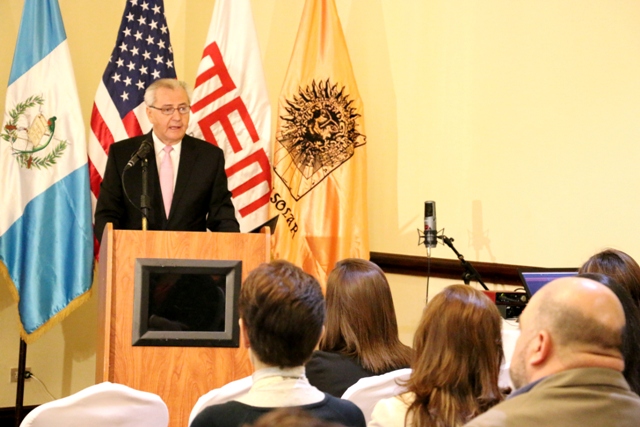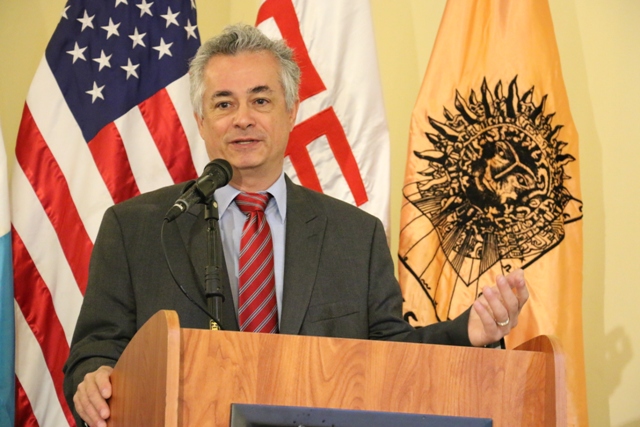
With the support of the Organization of American States (OAS), the Federal Government of Brazil and the Government of the United States, the Ministry of Energy and Mines (MEM), presented the results of the pilot plan to blend E5 (5% ethanol and 95% gasoline).

José Miguel de la Vega, Energy and Mines Minister
The E5 mixture was used in 23 vehicles and five motorcycles of different makes, models and years; which according to the Tax Administration (SAT) records represent the fleet of vehicles units in the country.
Euro Talleres Automotrices assessed the vehicles during the trial period, during this period the vehicles only required the change of engine oil and fuel filter change, oil and air.

Milagro Martínez, OAS Representative in Guatemala.
From April 09 to July 16, 2015, 3914.14 gallons were distributed 409 times. After the test non-recurring or individual damage was identified in the engines.
Top 95 octane gasoline without additives was used. The producer of the product was DIPETROL while ethanol was donated by the Association of Alcohol Producers of Guatemala (OFF).
The quality analysis of Oil Test International (ILO), and MEM’s technical laboratories revealed that after mixing 5% of ethanol, the fuel increased by two octanes, reaching 97 points of octane.

João Luis Pereira Pinto, Ambassador of the Federative Republic of Brazil in Guatemala
PERFORMANCE
OAS consultant, Paolo Arevalo, reported that from a qualitative survey of drivers of vehicles, 68% rated as excellent the fuel power, 18% rated it as average and 14% saw no change. None reported a negative experience.
EMISSIONS
The Universidad del Valle de Guatemala (UVG), conducted emission control in eight vehicles, analyzing combustion gases vehicle ignition and 2,000 revolutions per minute (ppm), using the 700 ENERAC system.
A pick-up vehicle reported a drop from 6.000 to 340 ppm. In passenger cars, the change was from 4,000 to less than 30 ppm.
The work of the UVG reveals that using the mixture E5, carbon monoxide emissions decreased on average up to 30%, the university continues with the analysis.
At the request of MEM authorities, a trial of mixture E7 was done a month before the study with the E10 mixing.
ALTERNATIVE FUEL
With this pilot project MEM meets the guidelines of the Energy Policy 2013-2027, which promotes the inclusion of alternative fuels.
If the results of the E10 blend are positive, Guatemala has a large ethanol production that could supply the country’s vehicle fleet.
Since 2010 the OAS has encouraged the development of clean, renewable and sustainable energy, access to technology and energy efficiency practices.
 View Map
View Map